I was not able to get this posted earlier and debated whether to follow up, but I said the back nine would come later and here it is:
Hole #10 from the tee, 445 yards, par-4. The tee shot plays across a small valley to a fairway that slopes significantly from left to right. The best play is to aim just right of a large group of oaks on the left side of the landing area. Drives hit to the right will usually find the large fairway bunker.

#10 approach- a stance that favors a left to right ball flight adds challenge to this uphill mid iron approach. The green is fairly large, more wide than deep, and is fronted by two greenside bunkers. Finding one these bunkers may be favorable for a shot hit short of the green, as the fairway severely slopes back away from the green repelling balls farther down the hill leaving difficult recovery options.
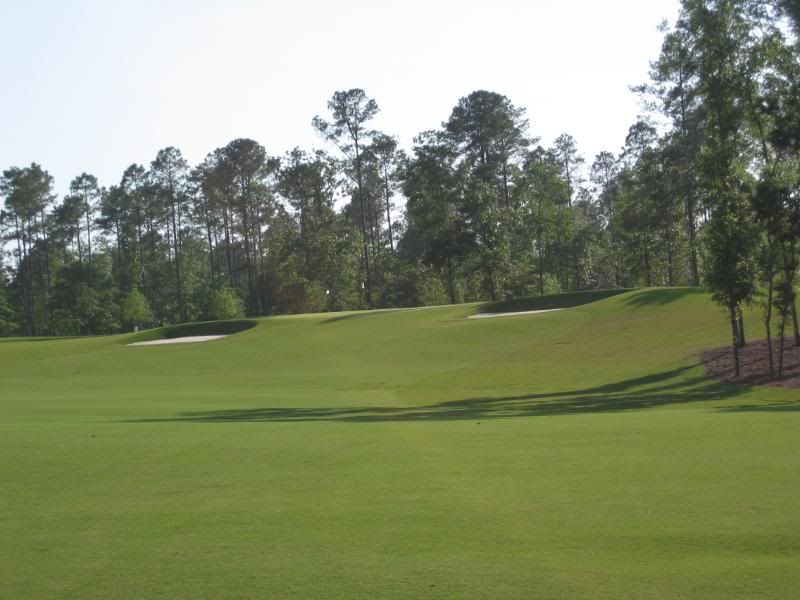
Hole #11 from the tee, 566 yards, par-5. Historically, the easiest hole at Kinderlou because it is usually reachable in two with a good tee shot. However, the tee shot needs to shaped around three fairway bunkers that are all in play. The irrigation lake that is barely visible to the right of the big bunker is definitely in play for shots missed to the right, the only time a lake or pond is in play on the course.
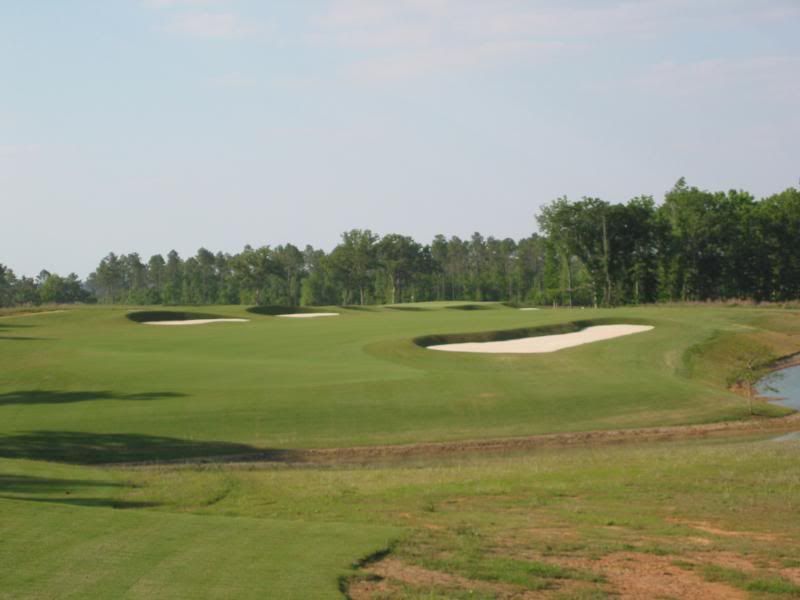
#11 first landing area- a good drive will leave a three wood or long iron shot into the green that must carry a series of cross bunkers. A shot played over the middle of the first two cross bunkers can be run onto the green as the upper fairway is shaped to feed balls toward the putting surface. Options are available for those choosing to lay up, either playing short or to the right or to the left of the cross bunkers. The left option carries more risk, but does offer the reward of a wide open approach to the green.
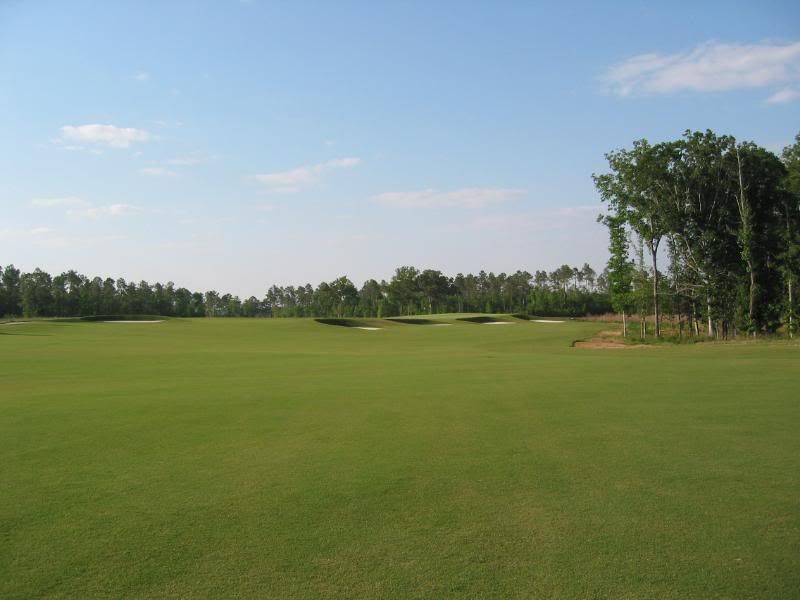
#11 second landing area right of the cross bunkers- Lay-ups played to the right of the cross bunkers still leave two deep greenside bunkers to play over for the third shot. The green is tilted from left to right and back to front leaving very few straight putts.

Hole #12 from the tee, 469 yards, par-4. This is statistically the toughest par-4 on the back nine, primarily due to the challenge of hitting the fairway off the tee. The fairway slopes left to right away from the dogleg which plays right to left. The inside of the dogleg is protected by a large fairway bunker, so visually it is a very intimidating tee shot, even though the landing area is fairly generous. This hole transitions the course into a more traditional South Georgia environment- pine trees and wire grass, plus the elevation changes become a little more subdued.
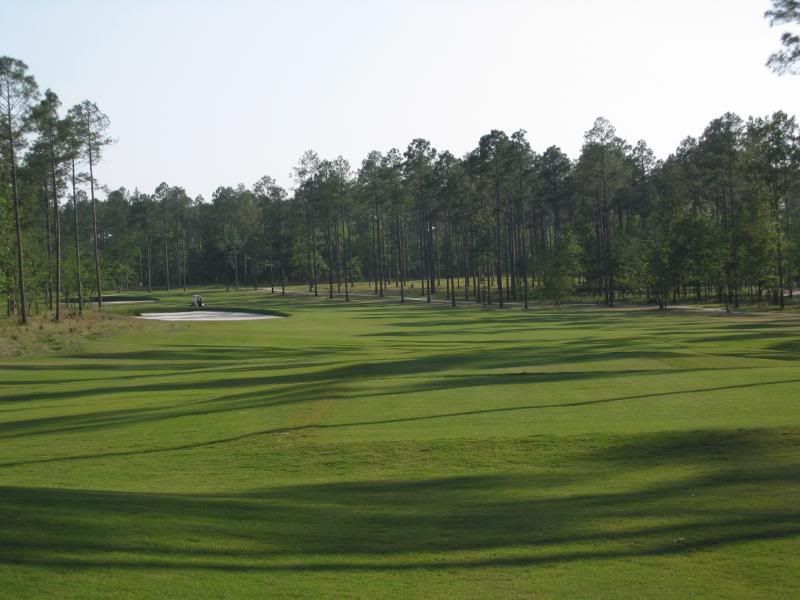
#12 approach- A good tee shot still leaves a long iron approach to a very low profile green with subtle runoffs around all sides. The sudden “Pinehurst” feel is accentuated by another Ross design features- a deceptive short fairway bunker on the left that appears greenside, yet is really about 30 yards out from the green. This bunker hides the left portion of the green from view and really challenges distance perception.
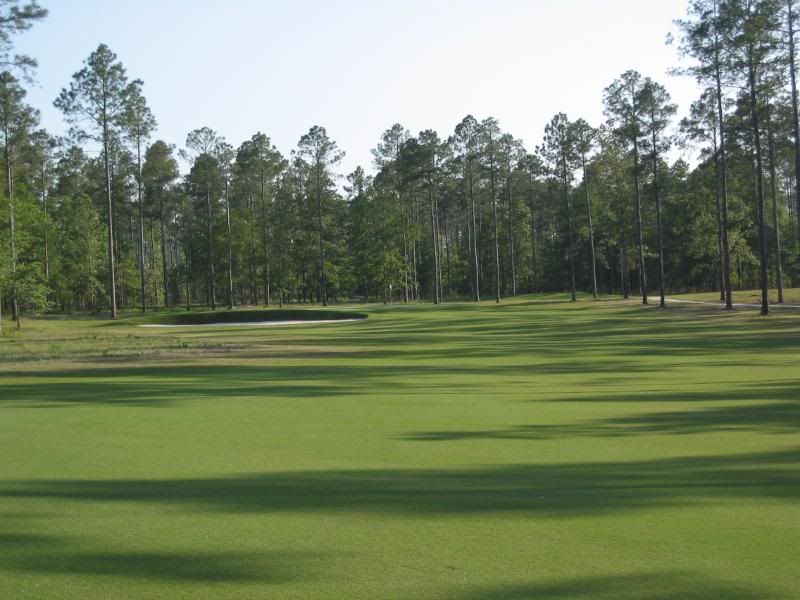
Hole #13 from the tee, 466 yards, par-4. This ninety degree dogleg right starts out with a blind downhill tee shot that really challenges a player mentally. The view from the tee is deceptive in that the tee shot looks shorter than it plays, putting some doubt into club selection. The safe play is down the middle or favoring the left, but this typically leaves a long iron approach. The aggressive play is down the right or even trying to cut the corner of the dogleg, which can set up a mid to short iron approach. However, a tee shot not hit solidly or missed to the right will find tree trouble and more than likely lead to a lay-up second shot.
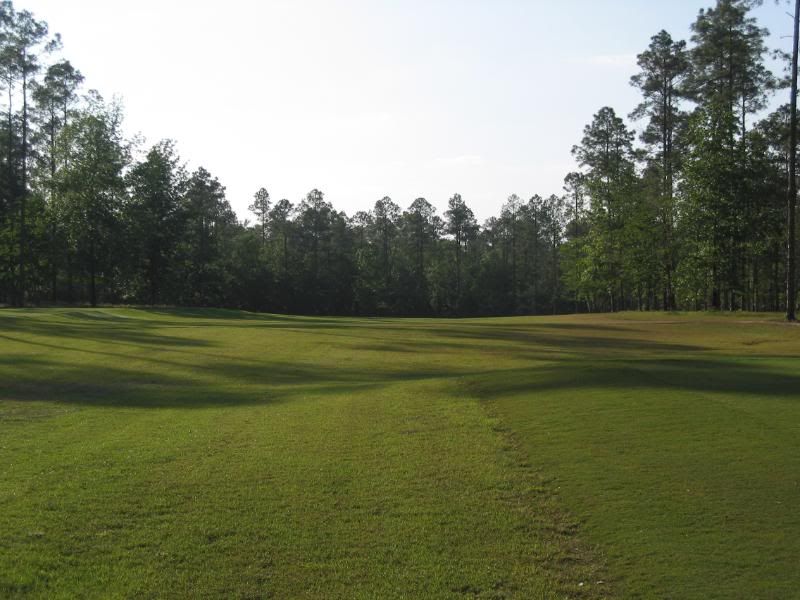
#13 approach- a tee shot finding the fairway leaves a level to slightly down hill approach to a right to left sloping green protected on the right by a large bunker and in front and to the left by a small creek. The creek was created as a visual and strategic design feature in lieu of installing subsurface drainage.
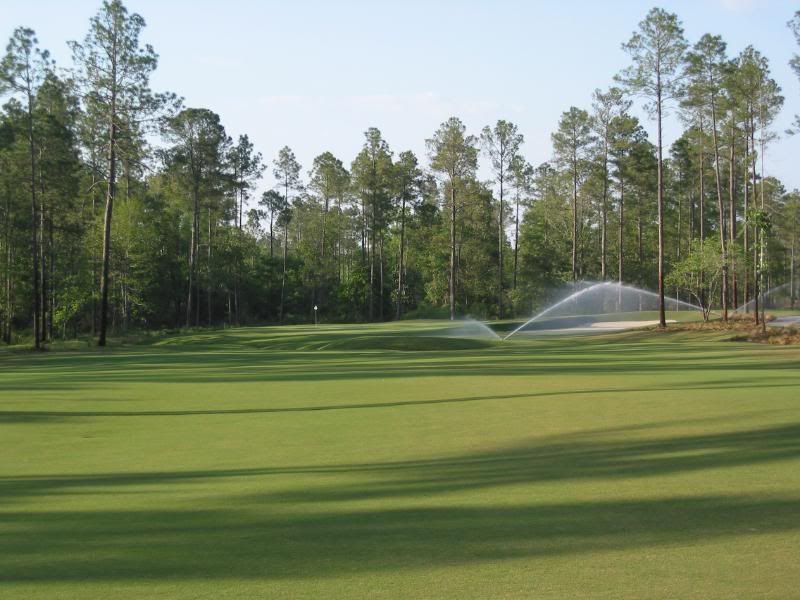
Hole #14 from the tee, 580 yards, par-5. Along with #3, this is the only other relatively flat hole on the course and it plays as a double dogleg par-5. The creek that was created at the 13th green continues down the left side of the 14th for almost the entire length of the hole. It serves as a risk/reward feature off the tee and if successfully carried can give the longer hitter an opportunity to get to the green in two.

#14 first landing area- the second shot here is usually a long iron or fairway wood lay-up that needs to favor the left side of the fairway to set up the best angle into the green. A shot going too far left will find the creek and a shot missed to the right, even in the fairway, will leave an approach that has to be worked around or over a group of pine trees. Barely visible in this photo is a fairway bunker located to the outside of the second dogleg. This bunker serves as a pretty good target and defines the right hand turn of the fairway.

#14 first landing area- view from a tee shot that has carried the creek on the left and offers the long hitter the option to go for the green in two. The green is behind the trees on the right and can be reached by going over the top or shaping a shot left to right around the trees, even though it doesn’t look like a very appealing option in this image.
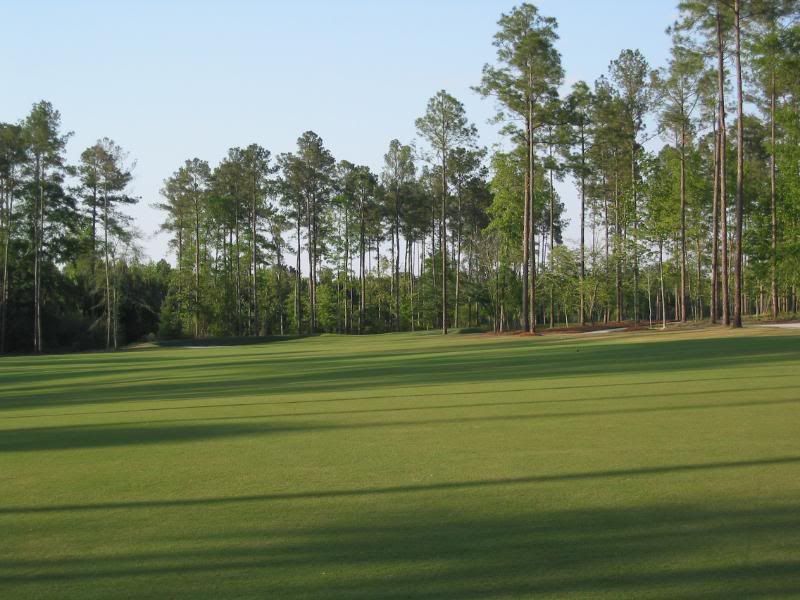
#14 second landing area- a well placed lay-up will leave a short iron or wedge approach into this narrow green mostly hidden and well protected by a large, front greenside bunker. A birdie is a very good score on this par-5.
